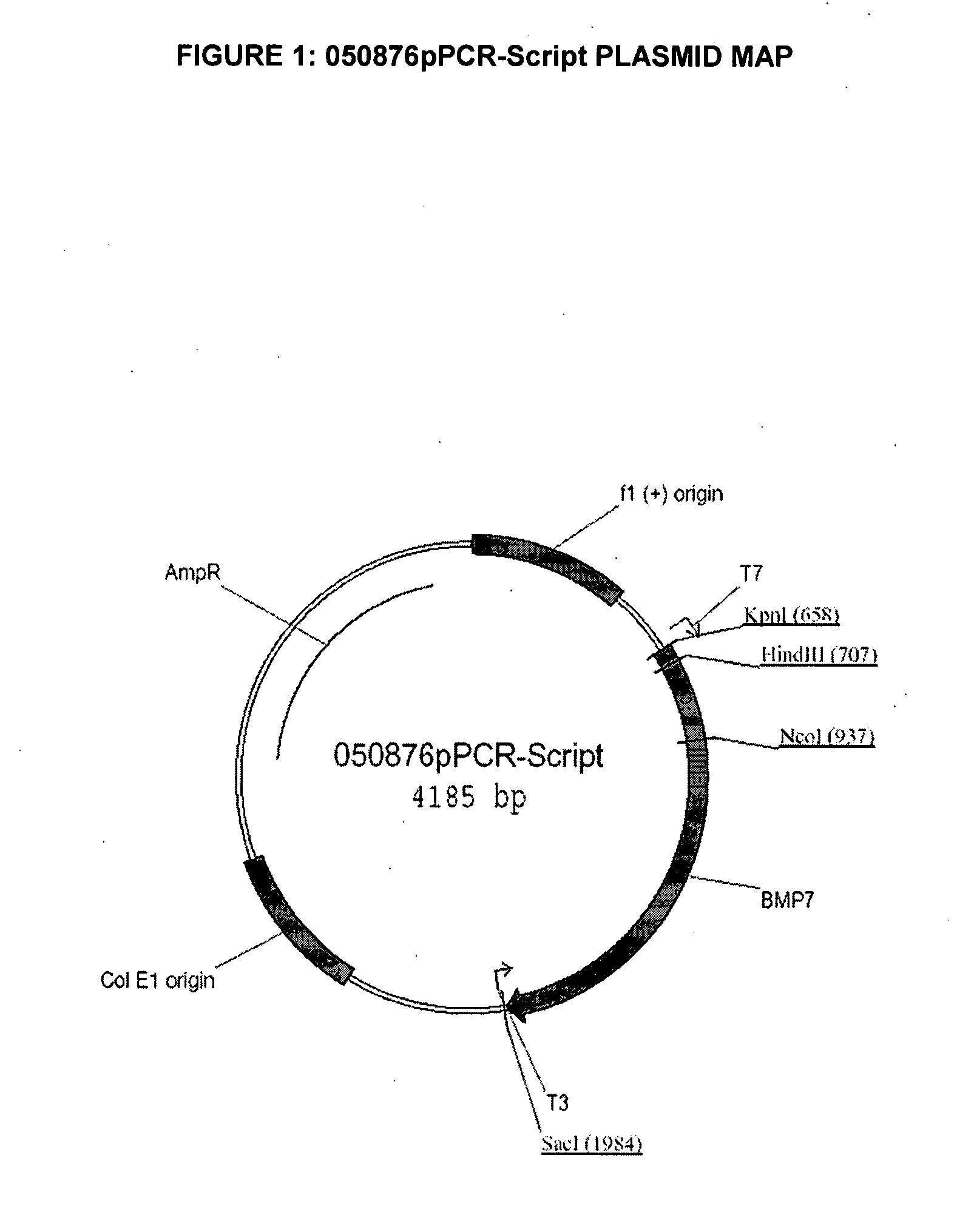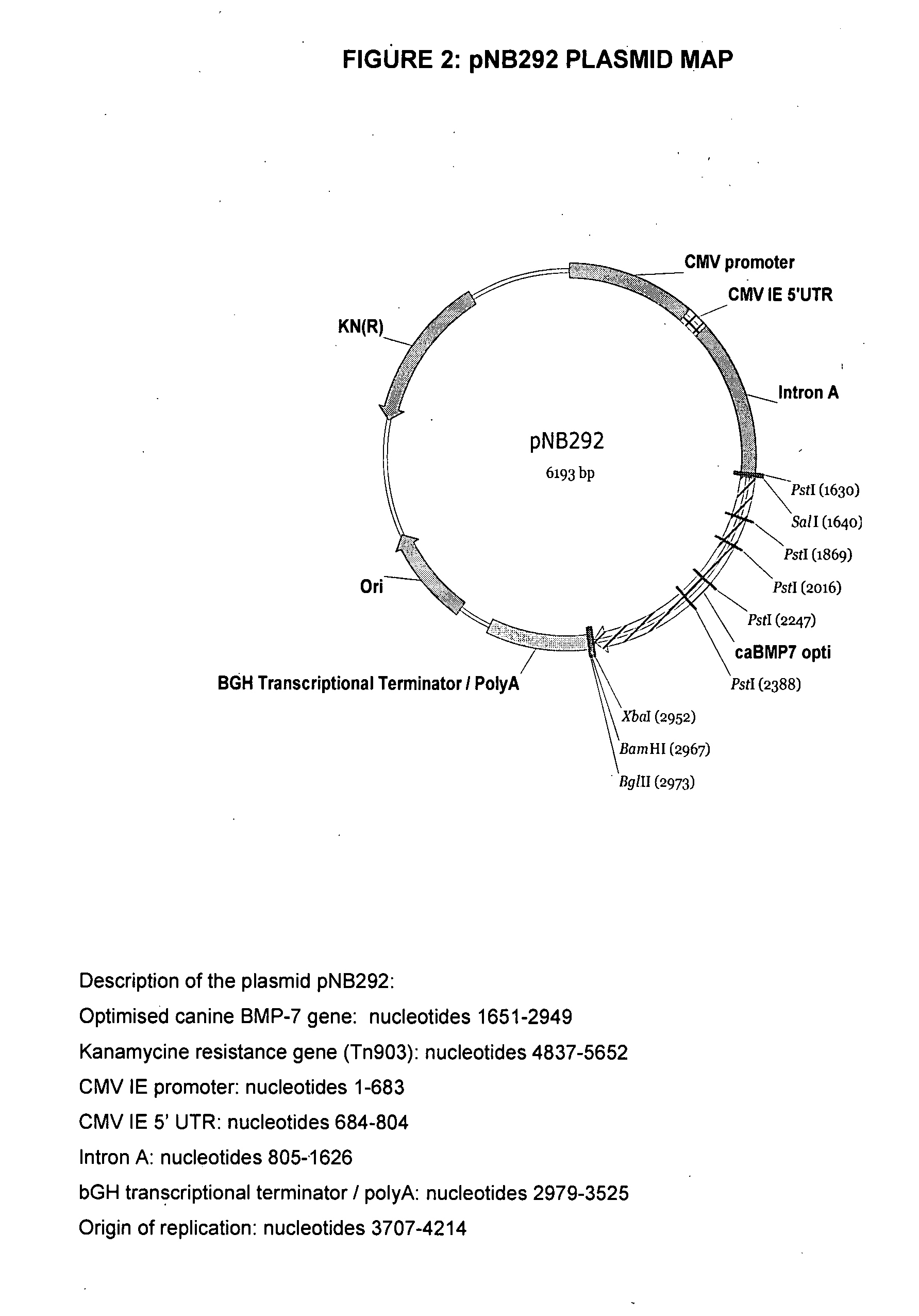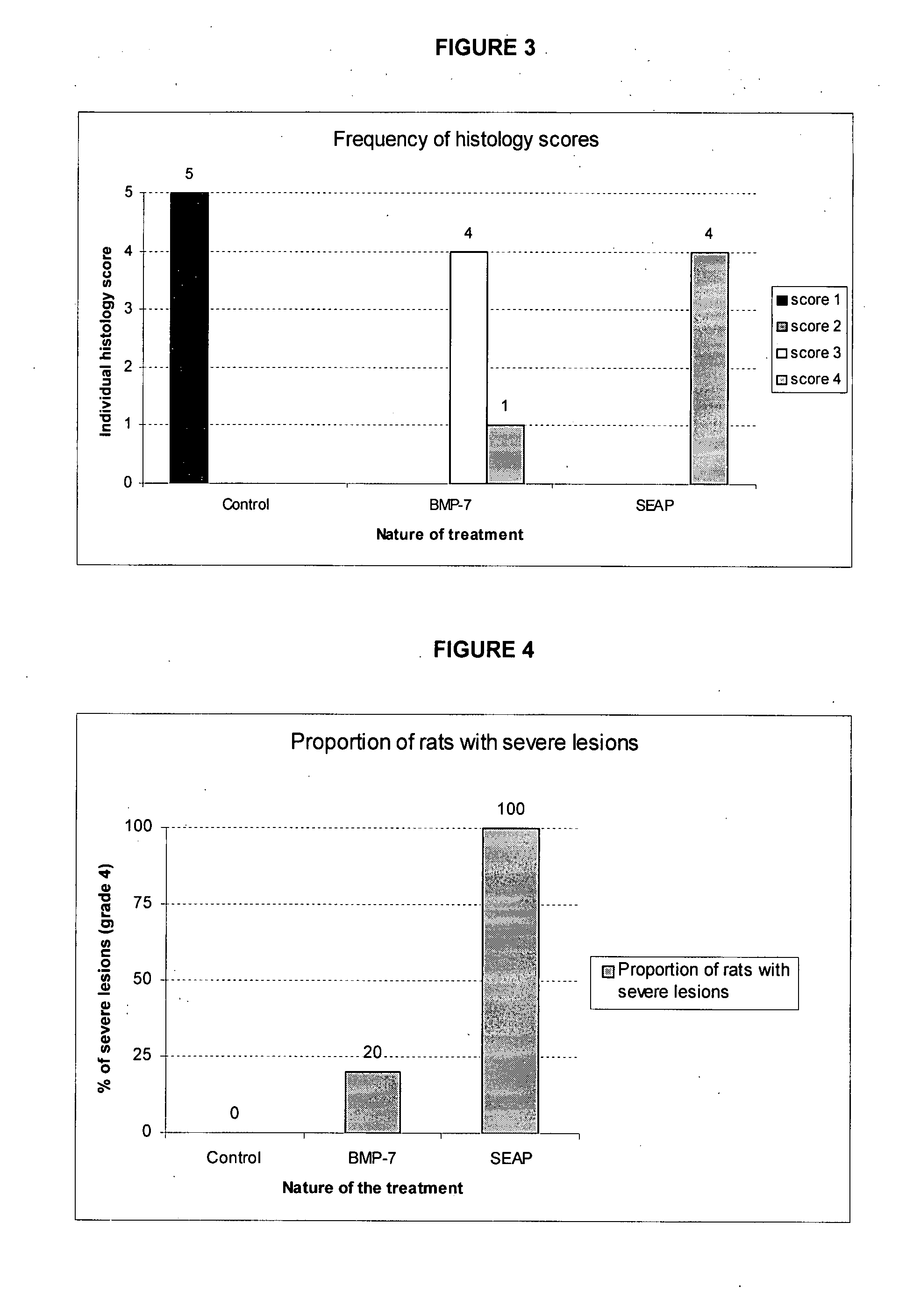Intra-vascular kidney gene therapy with plasmid encoding BMP-7
a technology of kidney gene therapy and plasmid encoding, applied in the field of recombinant vectors, can solve the problems of acute and chronic renal failure, debilitating and life-threatening diseases, failure of other major organ systems and death, and abrupt decline of renal function, so as to prevent, inhibit, delay or alleviate the progressive loss of renal function, the effect of reducing mortality and/or morbidity rates
- Summary
- Abstract
- Description
- Claims
- Application Information
AI Technical Summary
Benefits of technology
Problems solved by technology
Method used
Image
Examples
example 1
Construction of the Plasmid pNB292
[0145]The codon-optimized canine BMP7 open reading frame (“ORF”) consists of 1296 bp and encodes a 431 amino acids polypeptide (SEQ ID NO: 2). The codon-optimized cDNA, encoding the polypeptide sequence of SEQ ID NO: 3, and flanked by unique SalI and XbaI restriction sites, was synthesized from overlapping oligonucleotides, assembled by hybridization and cloned into the pCR-Script vector (Invitrogen) to generate plasmid pPCR-Script050876 (FIG. 1).
[0146]The DNA fragment corresponding to the ORF of interest was excised using SalI and XbaI digestions and further cloned into the pVR1012 plasmid (J. Hartikka et al. Human Gene Therapy 1996, 7, 1205-1217) to generate the pNB292 plasmid (FIG. 2) in which the expression of the codon-optimized canine BMP-7 is driven by the cytomegalovirus immediate early (CMV IE) promoter / enhancer. The nucleotide sequence of the pNB292 plasmid is that of SEQ ID NO: 10. The pNB292 plasmid was transformed into DH5α E. coli bact...
example 2
Therapeutic Effect of BMP-7 Plasmid-Based Gene Therapy
[0148]A study was conducted in rats to demonstrate the ability of BMP-7 gene therapy to reduce the intensity of tubulo-interstitial lesions associated with the evolution of an experimental unilateral ureteral obstruction (UUO) model of chronic renal failure.
[0149]20 male Sprague-Dawley rats weighting approximately 200 g at the initiation of the study were purchased from IFFACREDO (L'Arbresle, France). The maximum and minimum of both temperature and hygrometry of the room were recorded daily. The target temperature and hygrometry range were 20-24° C. and 20-70%, respectively. Light was provided using an automatic timer in cycles of 12 hours light and 12 hours dark. Only healthy rats were included in the study. Rats were allocated randomly to 4 groups of 5 animals each (Groups 1 to 4).
[0150]Unilateral ureteral obstruction (UUO) was performed on rats from groups 2, 3 and 4, using an established procedure (R. Chevalier et al., Kidney...
example 3
Construction of the Plasmid pMEB038
[0158]The codon-optimized human BMP7 open reading frame (“ORF”) consists of 1296 bp and encodes a 431 amino acids polypeptide (SEQ ID NO: 15). The codon-optimized cDNA, encoding the polypeptide sequence of SEQ ID NO: 14, and flanked by unique EcoRV and XbaI restriction sites, was synthesized from overlapping oligonucleotides, assembled by hybridization and cloned into the pVR1012 plasmid (J. Hartikka et al. Human Gene Therapy 1996, 7, 1205-1217) to generate the pMEB038 plasmid (FIG. 5) in which the expression of the codon-optimized human BMP-7 is driven by the cytomegalovirus immediate early (CMV IE) promoter / enhancer. The nucleotide sequence of the pMEB038 plasmid is that of SEQ ID NO: 16. The pMEB038 plasmid was transformed into DH5α E. coli bacteria and subsequently purified using a commercial kit as recommended by the manufacturer (Pure Yield™ Plasmid Midiprep, Promega). Final plasmid concentrations were 2 mg / ml in TE buffer.
[0159]The transient...
PUM
| Property | Measurement | Unit |
|---|---|---|
| Volume | aaaaa | aaaaa |
| Volume | aaaaa | aaaaa |
| Volumetric flow rate | aaaaa | aaaaa |
Abstract
Description
Claims
Application Information
 Login to View More
Login to View More - R&D
- Intellectual Property
- Life Sciences
- Materials
- Tech Scout
- Unparalleled Data Quality
- Higher Quality Content
- 60% Fewer Hallucinations
Browse by: Latest US Patents, China's latest patents, Technical Efficacy Thesaurus, Application Domain, Technology Topic, Popular Technical Reports.
© 2025 PatSnap. All rights reserved.Legal|Privacy policy|Modern Slavery Act Transparency Statement|Sitemap|About US| Contact US: help@patsnap.com



